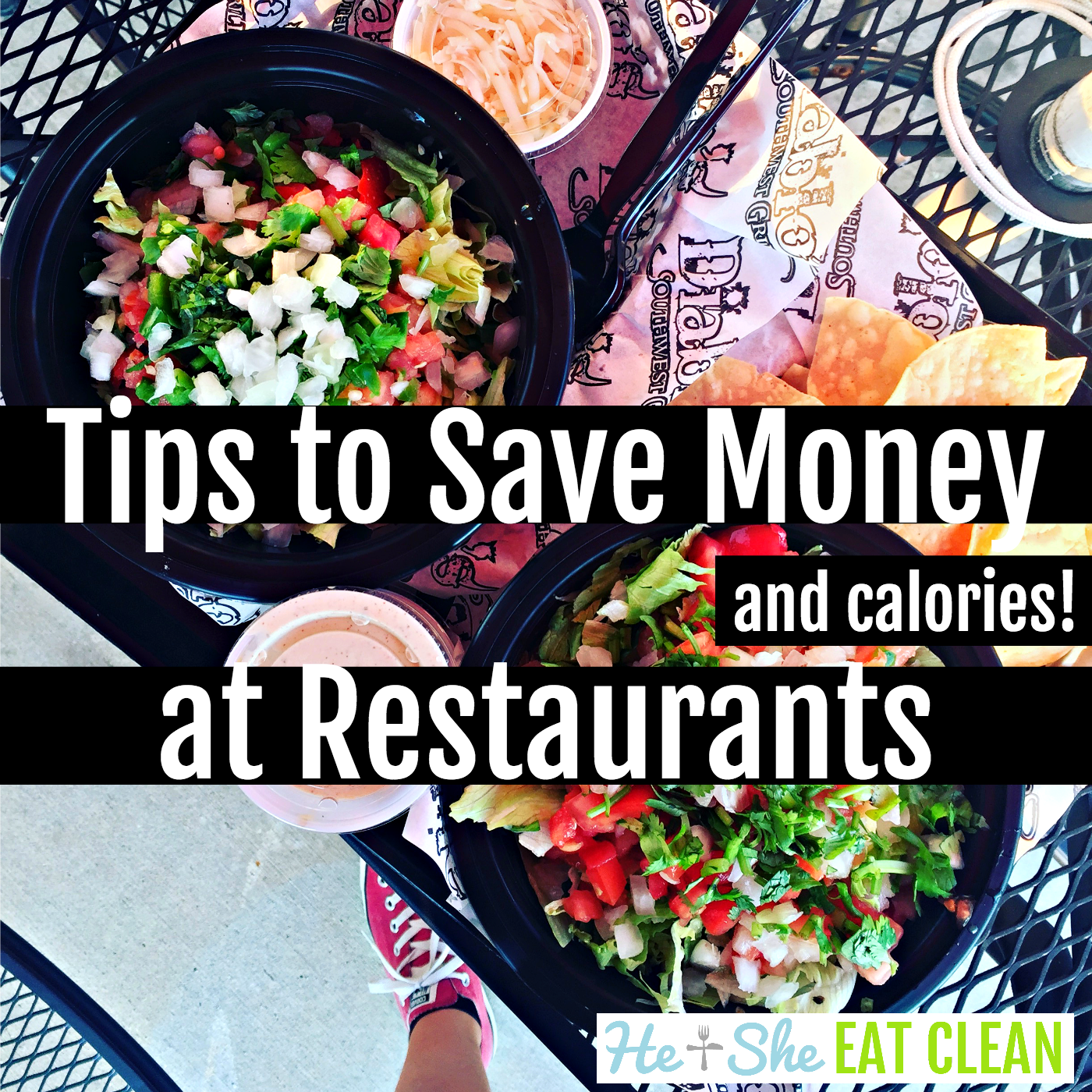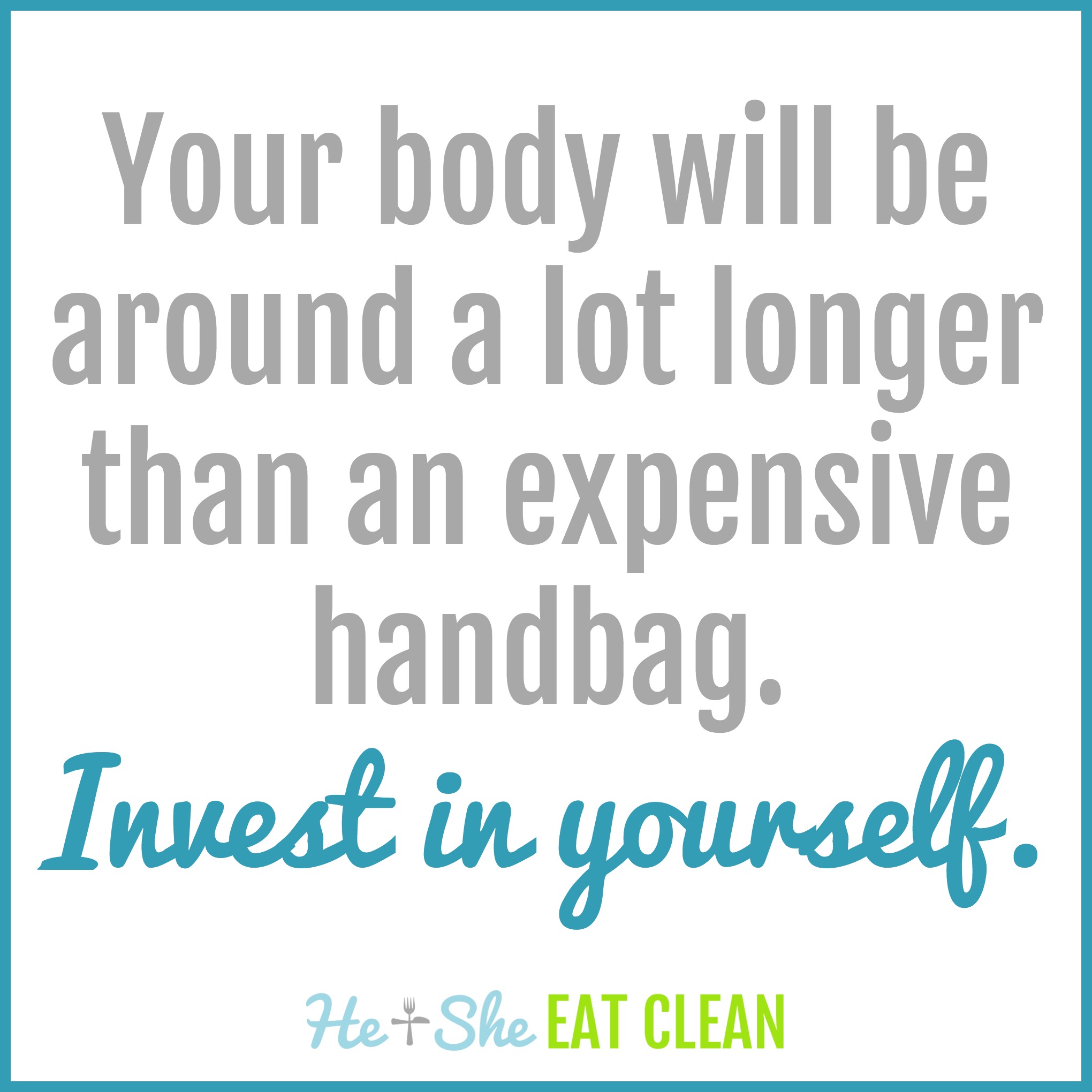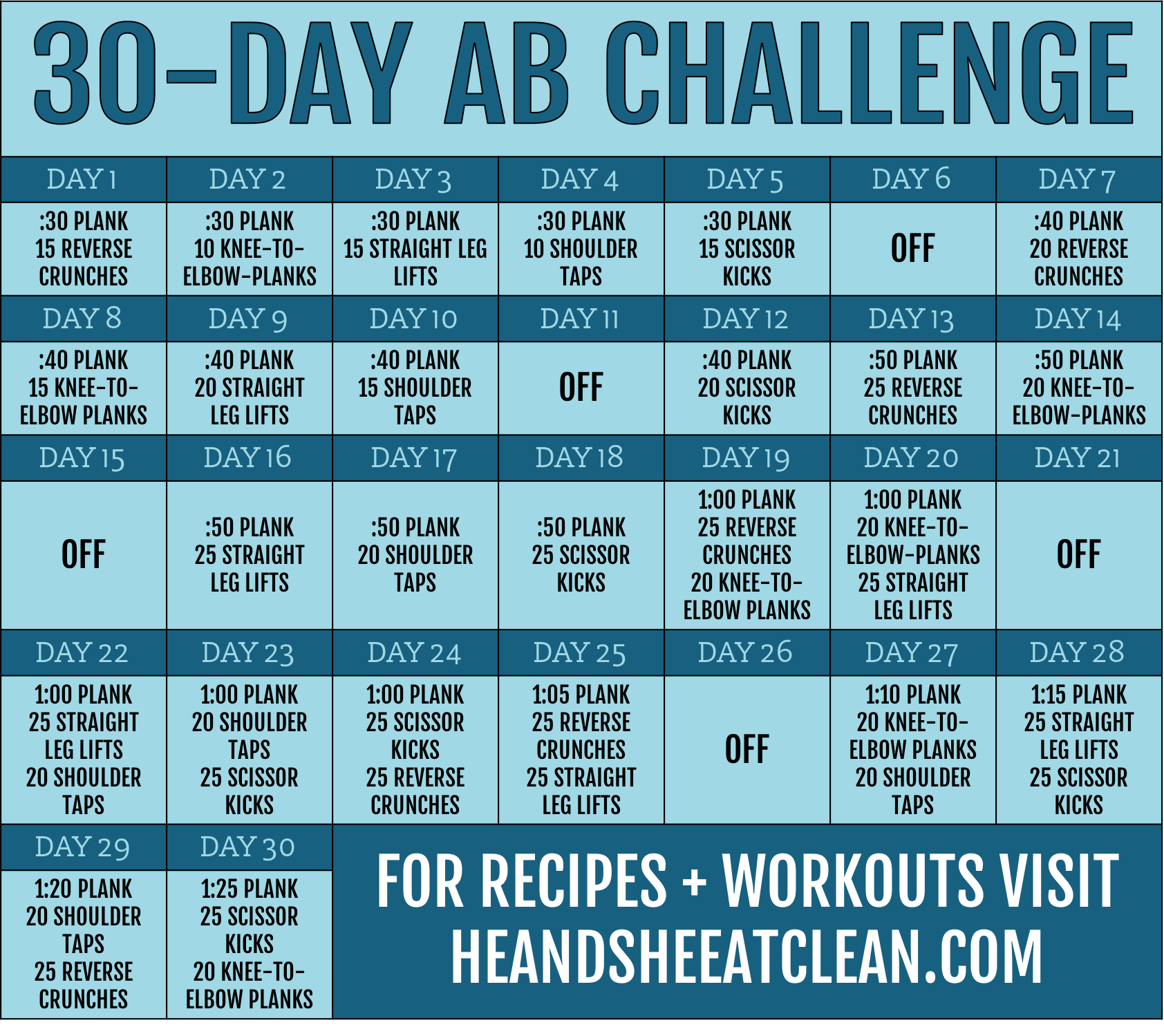The easiest way to save money on food is to skip restaurants altogether and make your own food but we know many people like to go out so we are going to share some of our favorite money saving tips with you! Not only will limiting your dining out help your wallet but it will also help your waistline. You are in complete control of what goes into your food and how much you eat. We try to limit our eating out to once or twice a week but you can use these tips no matter how often you dine out. Some of these tips seem obvious but are often overlooked.
>>>>> The Ultimate List of Ways to Save: 18 Ways to Save $15,000 in 2018!
Ways to Save Money (and Calories!) at Restaurants
- Choose an inexpensive restaurant
- We don’t promote "fast food" but places like Moe’s, Chipotle, and other similar restaurants are surprisingly affordable and typically have healthier options!
- Calorie Saving Tip: Ask for the extras (like cheese, guac, etc.) on the side so you can control how much you consume.
- Go for lunch
- Most restaurants are open for lunch or early dinners. Many of them have lunch menus that are similar to their dinner menus but less expensive!
- Calorie Saving Tip: Just eating out for lunch instead of dinner is a calorie saver because the portions are usually slightly smaller!
- Skip the soft drinks
- Even though $2-$3 per drink doesn't sound very expensive it quickly adds up over time and water is free at every restaurant I've been to.
- Calorie Saving Tip: Water has zero calories and the calories from those "free refill" soft drinks can quickly add up, just like the cost does.
- Skip the alcohol
- Alcoholic beverages are very expensive when dining out. The cheapest I've seen is $6 per drink. If there's two of you there and you both have two drinks, that's $24 JUST on drinks! Talk about adding up quickly! If you need to drink, drink at home.
- Calorie Saving Tip: Again, water has zero calories and typically doesn't lead to eating other random things because you are drinking.
- Skip the appetizers
- Eat something small before you go to dinner if you are already starving! Appetizers are at least $8 and full of calories...see below.
- Calories Saving Tip: Appetizers are loaded with calories, most are fried and just make you even more hungry. If you are at a restaurant that automatically gives you bread or chips, ask them not to or limit yourself to one slice, a few chips, etc.
- Skip the desserts
- See above point on appetizers...
- If you must have dessert, limit it to once a week and buy it from the grocery store. It’s much less expensive to go to the grocery store and buy ice cream (or make your own using frozen banana and peanut butter!) than it is to buy dessert at restaurants. We also have a lot of healthy dessert recipes that you can try (four-ingredient peanut butter balls and cookie dough are two of our most popular)!
Below are some examples and how much is spent. Keep in mind that this is for just ONE time eating out. Many families eat out multiple times per week resulting in $800+ spent on dining out in a month.
- If a party of two gets an appetizer ($8), one alcoholic drink each ($6 each, minimum), entrees ($15 each, minimum), and a dessert ($8) that's a total of $58 plus tip.
- If a part of four (two parents and two kids) gets an appetizer ($8), four soft drinks ($3 each), entrees ($15 each adult, $8 each child), and dessert ($8) that's $74.
Although we are fully aware that many people like to dine out and act carefree at least once a week, it's not the best idea when you are trying to save money and/or pay off debt. The hard truth is that sometimes you have to say "no". Life is about balance. That requires saying "no" more than "yes" when you have goals! As mentioned, Scott and I try to keep our dining out to once or twice a week and usually spend less than $20. Sometimes, when we are traveling or really busy, we do dine out more often but we always follow these tips and try to limit our spending as much as possible.















![#ProgressIsPerfection [3 Simple Ideas to Reach Your Goals]](https://images.squarespace-cdn.com/content/v1/555c964fe4b07d15252a8927/1520969172984-7HDOHI6ZRM0PCZCZ7O67/progress-is-perfection-silk-he-and-she-eat-clean2.jpg)




